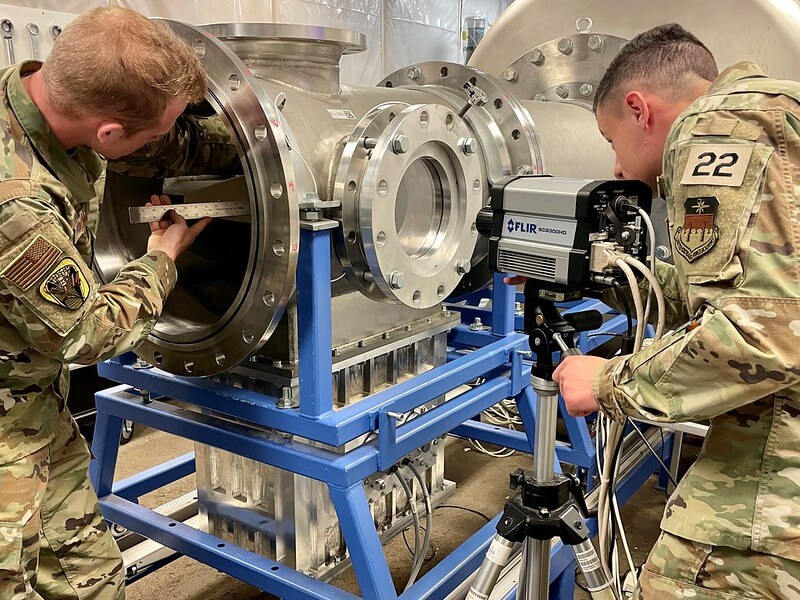Academy cadets team up with Air Force’s Office of Scientific Research to improve hypersonic systems
 Cadets 1st Class Sean Adams and Peter Garlisi prepare the Mach 6 Ludwieg Tube to test boundary layer transition – BOLT – geometry in the Air Force Academy’s aeronautic lab, March 16, 2022. NASA reached out to the Academy in 2021 for the institution’s support of a series of BOLT tests. (U.S. Air Force photo)
Cadets 1st Class Sean Adams and Peter Garlisi prepare the Mach 6 Ludwieg Tube to test boundary layer transition – BOLT – geometry in the Air Force Academy’s aeronautic lab, March 16, 2022. NASA reached out to the Academy in 2021 for the institution’s support of a series of BOLT tests. (U.S. Air Force photo)
By U.S. Air Force Academy Public Affairs
U.S. AIR FORCE ACADEMY, Colo. – Researchers at the Air Force Academy and the service’s Office of Scientific Research say an experimental rocket launch will help the Air Force design air and space craft better able to withstand heat and turbulence at hypersonic speeds.
Sarah Popkin, who oversees the project for the Office of Scientific Research, said the March 21 launch from NASA’s Wallops Flight Facility, Virginia is specifically designed to give researchers more information on boundary layer transition – “BOLT” – at hypersonic speeds.
“Boundary layer transition and turbulence are complex phenomena that are difficult to study because we can’t replicate [these conditions] on the ground,” Popkin said.
Turbulence, Popkin said, results in heat.
“Now you’re having to worry about protecting internal electronics and things like that,” she said. “Heat is the mother of all problem for hypersonics.”
Cadets used thermal imaging for the project to measure turbulence in the presence of boundary layer trips, and the launch augments their research on boundary layer transition at the school’s wind tunnel, capable of experimental tests up to 4,600 mph, six times the speed of sound. NASA teamed with the Academy in 2021 for a series of these tests.
“We’re looking forward to the launch and seeing this key hypersonic test contributing critical data to the design of next generation hypersonic systems,” Col. Douglas Wickert, head of the Academy’s aeronautics department.